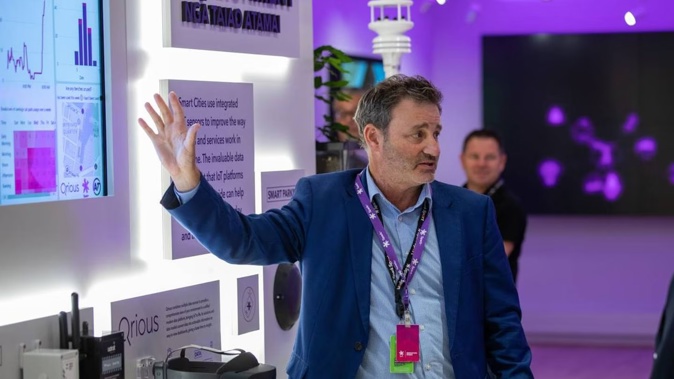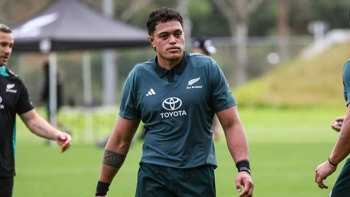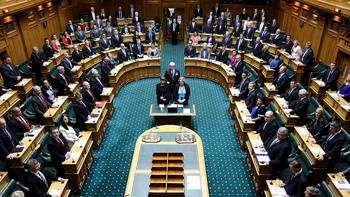
Spark chief operating officer Mark Beder is excited about the potential of the company’s Takanini data centre.
“Later this year we will complete a major upgrade. It will join the recently updated Mayoral Drive data centre,” says Beder. “Both will give us considerable extra capacity in a business we consider to be a growth opportunity.
“We have lots of customers who are either using our cloud services from these centres or who have tenancies in them. It’s a good extension for them and it’s good from a New Zealand perspective to have this capacity on shore.”
Soon Spark will face competition in the data centre market from the likes of Amazon’s AWS unit and Microsoft’s Azure business. Beder says these companies, known in the industry as hyperscalers because of their sheer size and reach, were always destined to show up in New Zealand. “It was always the case for us and part of our planning.”
As well as conventional data centres and cloud, Spark now offers edge compute and co-location space in its old telephone exchanges.
When Spark and Chorus demerged, Spark kept 35 of the exchanges up and down the country including six in Auckland. The buildings are now mainly used to house Spark’s core technology: the optical transport network, access networks and the core mobile network.
Beder describes the optical transport network as Spark’s “State Highway 1″. From there you go to backhaul networks that move data between areas or regions and the more local access networks.
“Edge is when you start moving that core mobile capability out to the edge of the network,” he explains. “With, say, 5G standalone, you might put a switch closer to customers. That way you get lower latency and higher speeds. We’re doing this with our partners AWS (edge) Samsung and Nokia (5G standalone) and investing heavily in it throughout New Zealand and there is a big footprint in Auckland.”
In practice, this enables projects like the AI-powered computer vision pilot Spark and its Qrious business unit developed for EnviroWaste to work with AWS. The project uses computer vision and AI to track people in a busy waste disposal area watching over them and checking that people are safe. It needs to move fast to trigger alerts if someone gets too close to dangerous equipment.
Helicopters were on standby knowing they could access areas where road vehicles could not. Photo / Supplied
“It comes down to latency. When you get latency that low, just a few milliseconds, things happen in real time. If someone gets close to the machinery it will shut down.”
At present most 5G in New Zealand is non-standalone. That means there is a 5G radio access network built over the existing 4G core network. Standalone 5G uses its own core network.
Beder says Spark is working on trials as it moves towards 5G standalone. One involves working with Manevir, a technology provider, AWS and Nokia. The trial looks at testing latency with video analytics.
“We got the latency down to two single digit milliseconds, which is impressive. It’s the kind of performance you might expect from a fibre connection.”
Another trial involved Ericsson and Red Hat. Again, it showed that 5G standalone technology can handle the low latency, high bandwidth and reliability that high-performance use cases need. “We wanted to look at the lower latency you can get on a fixed wireless broadband network. The speeds we got were impressive, over 700 megabits per second. That’s fibre speed, but the more interesting thing is the low latency.”
He says it’s going to make a huge difference for any application that needs to work in real time.
“In the consumer world, gaming would be the best example. In the business world, it would be critical apps that use video analytics or computer vision.”
Low latency technology can also be important for more advanced Internet of Things (IoT) applications. Spark recently hit a milestone with one million connected IoT devices. The number of connections was up 39 per cent in the first half of this financial year and revenue from IoT was up 21 per cent year on year.
Spark built three IoT networks that sit over the top of the company’s 4G mobile network. “We knew it would be important for us from a growth perspective. We looked at the areas where we and our customers could get the most value from the technology. One big market for us has been smart metering — both water and electricity. Also in telematics, switches and logistics. With water metering we’ve found it is good for finding leakages earlier and it also means our customers make fewer truck rolls.
He says it won’t be long before the number of machine-to-machine connections on Spark’s network will outnumber mobile connections. He sees huge potential for the technology in applications like the smart city and says we’re only scratching the surface of what it can deliver.
The severe weather that hit Auckland and other North Island areas earlier this year was the biggest test of resiliency Spark or any of the other telecoms companies have ever faced.
Beder says: “We’ve had network impacts before. We’ve seen severe regionalised impacts, but we’ve never seen an impact that’s taken down 152 mobile sites.”
Spark prepared as the cyclone approached. Cell sites have battery power backup, but this only works for a while, if the power is out for longer Spark uses generators. “We made certain generators were deployed in the locations where we thought the cyclone would hit. We did a lot of network preparation and we had helicopters on standby knowing they could get into areas where road vehicles might not.”
He says that when something like this happens, Spark’s immediate focus is to get customers back up and running as quickly as possible.
“We were able to get generators to sites that had power outages, but where there was still backhaul (the fibre networks used to move traffic between areas and regions). Where there wasn’t fibre, we were able to look for other solutions, including microwaves and satellites.”
The Coromandel Peninsula was back online in 12 to 14 hours; it took longer in other areas.
Now he says the job is to process the lessons learned from these events and understand how to work better with the government, partners and other telecom companies when facing future severe weather.
“With the amount of generators we had out there, refuelling became a big issue for us. And making sure people were safe when they visited dangerous sites.
“We know we need to have more generators in each region and more helicopters to reach sites.
“We also aim to work with government on battery storage and to look at building in redundancy and more fibre routes.”
- Spark is an advertising sponsor of the Herald’s Project Auckland report
Take your Radio, Podcasts and Music with you

/cloudfront-ap-southeast-2.images.arcpublishing.com/nzme/KHA2ITQCXBHNHG2KUCOTJG5RBY.JPG)








